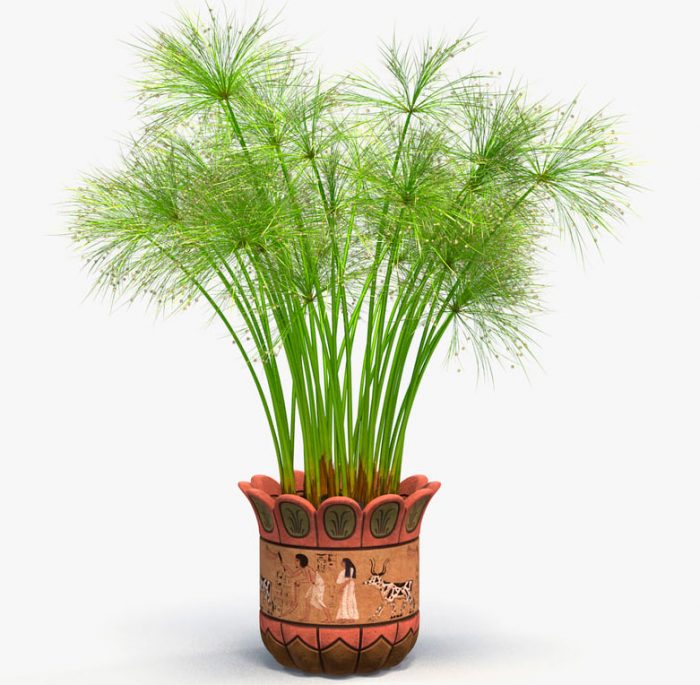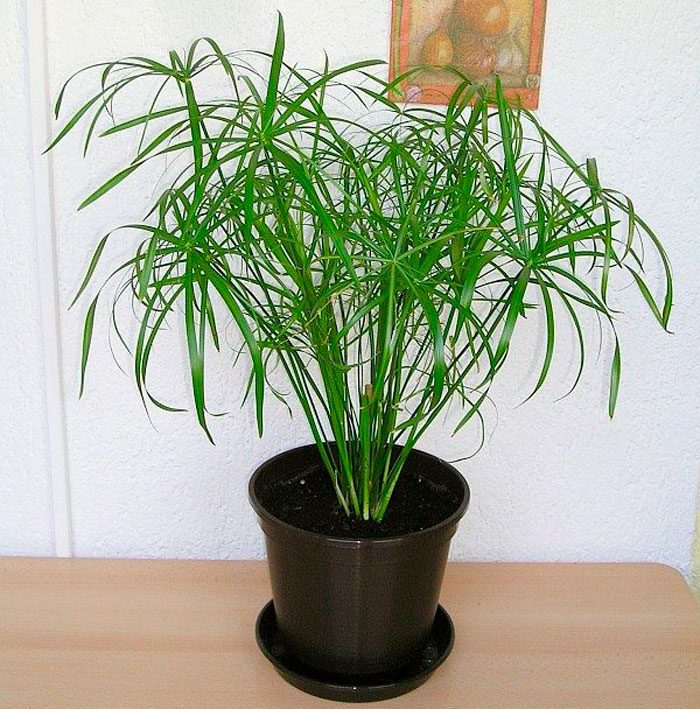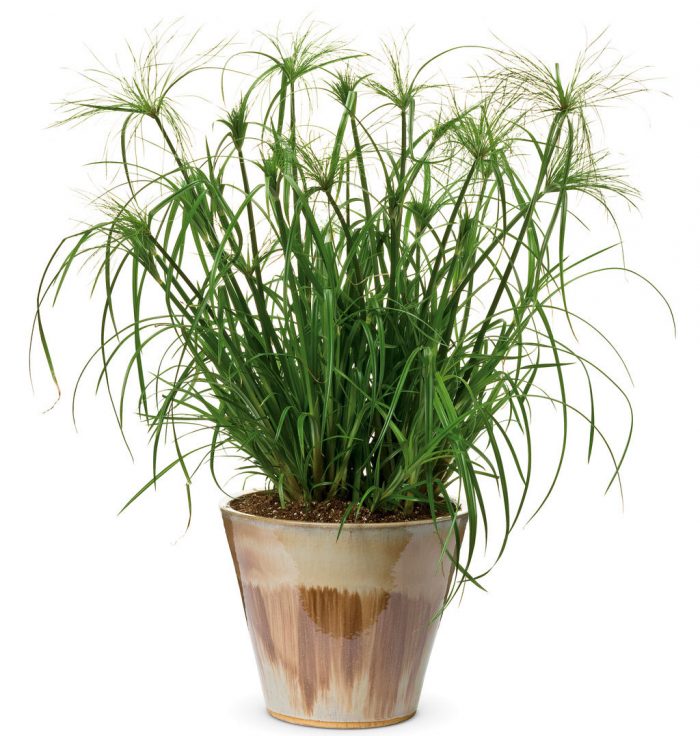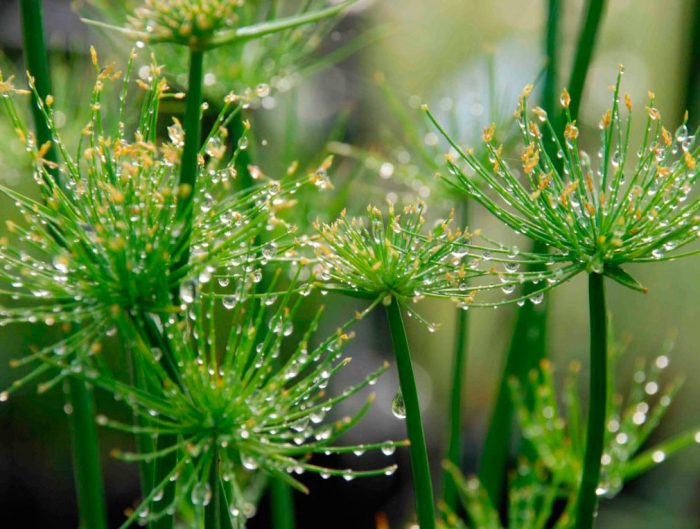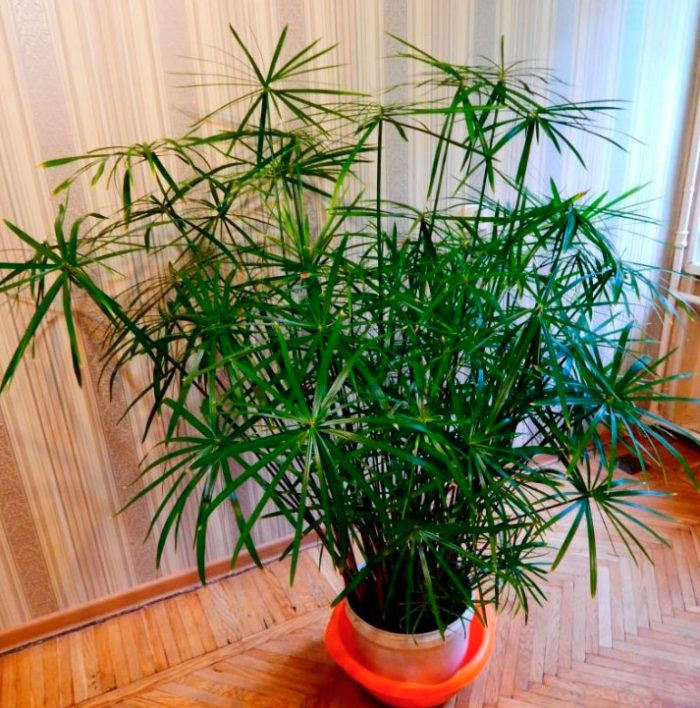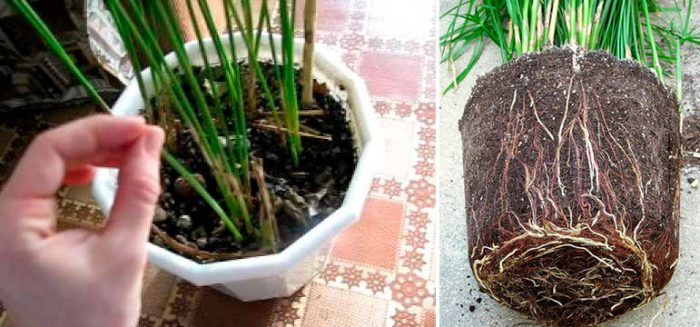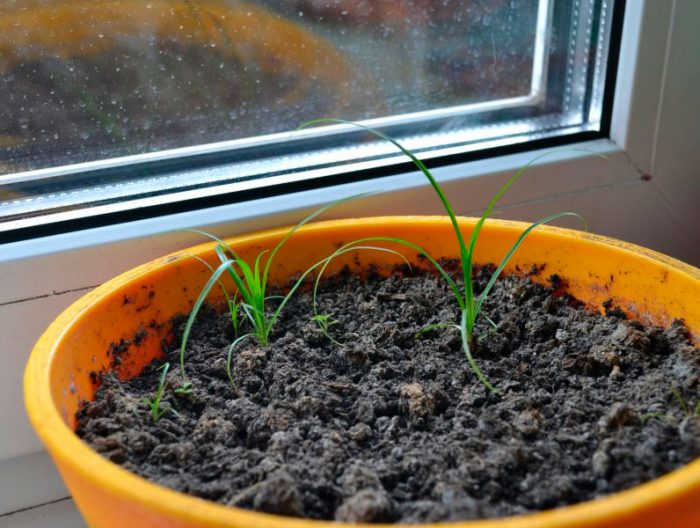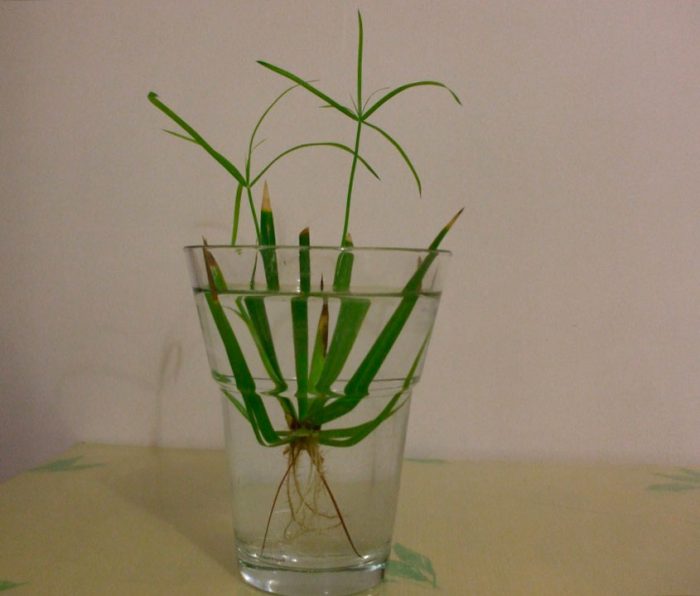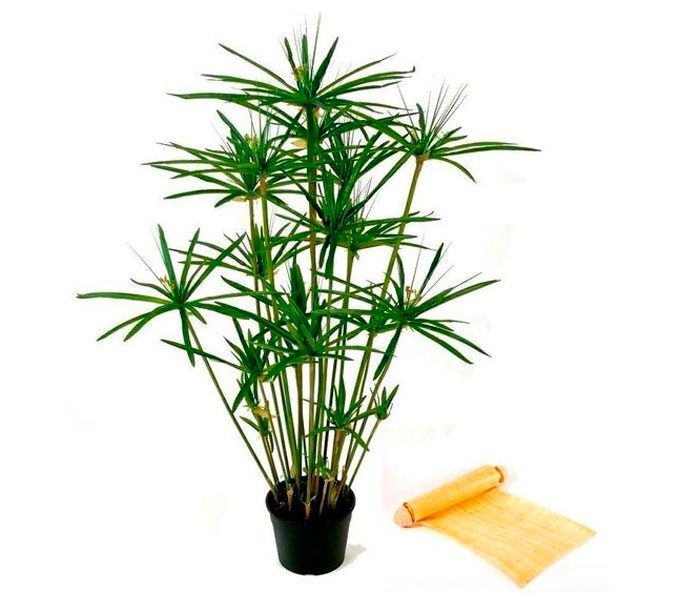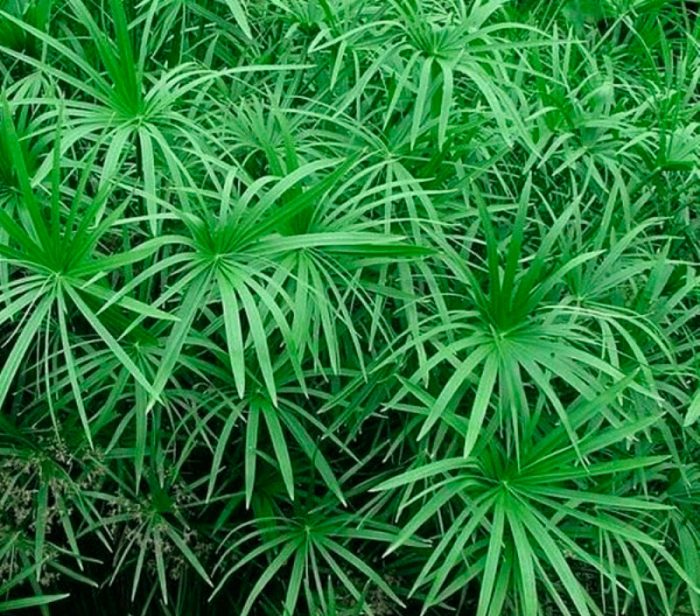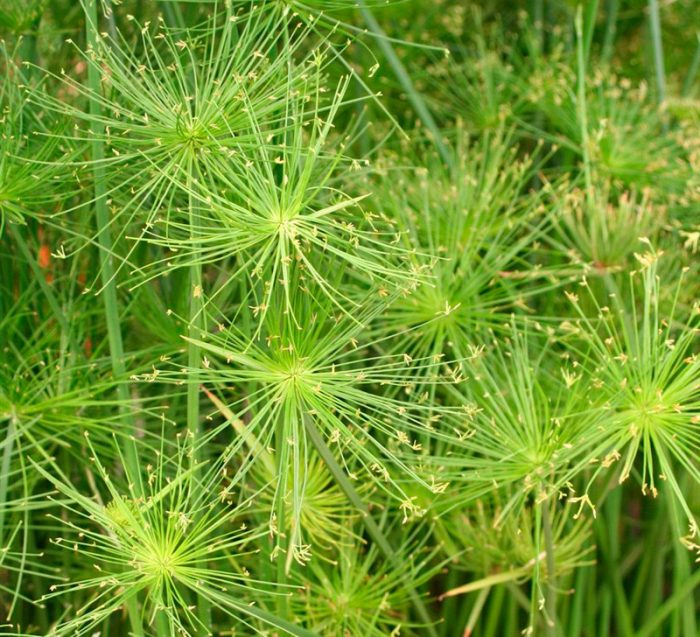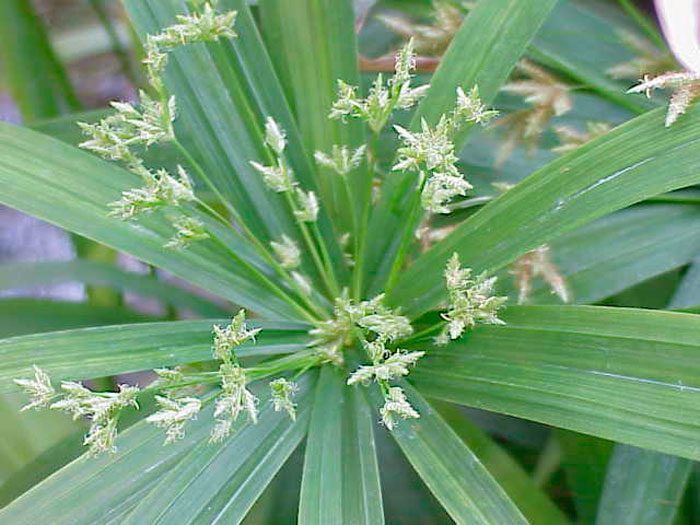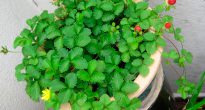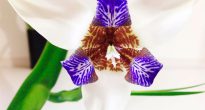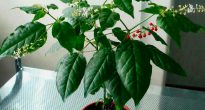The Cyperus plant, also called the feed, is a member of the Sedge family. This genus unites about 600 species. In nature, it occurs from temperate to tropical zones, while it prefers to grow in marshy areas and water bodies.
Content
Features of Cyperus
Tsiperus is a perennial with herbaceous shoots, they have nodes in the upper part that are located quite close to each other. Leaf plates grow from close knots, with this shape they are slightly similar to umbrellas. Only a few species are grown indoors. Such a moisture-loving plant grows very well in the shade. Cyperus is often used to decorate aquariums, and they are also placed in places where it is very dark for other crops. Most often it is grown in semi-covered premises in not very large artificial reservoirs.
Brief description of cultivation
- Bloom... Cyperus is cultivated as an ornamental deciduous plant.
- Illumination... A shaded area or a large amount of bright but diffused light.
- Temperature regime... During active growth - from 20 to 22 degrees, in winter - no colder than 12 degrees.
- Watering... During the growing season, watering should be frequent and abundant. Make sure that the root system of the bush is in a moist substrate at all times. As a rule, a pot with such a flower is placed in a planter filled with water. In winter, watering should be moderate.
- Air humidity... It needs high air humidity, such a flower must be often moistened from a spray bottle.
- Fertilizer... In the spring-summer period, you need to feed the plant regularly once every 20 days, for this, a complex mineral fertilizer is used.
- Dormant period... It is not pronounced. The flower grows all year round.
- Transfer... Transplant the plant as needed at any time of the year.
- Soil mixture... For its preparation, humus and peat bog soil are combined in a 1: 1 ratio, and a sixth of bog silt is added to the resulting mixture. When the flower is transplanted, the surface of the soil mixture must be covered with a layer of sand. This plant is suitable for hydroponic cultivation.
- Reproduction... Rosettes, cuttings, dividing the bush and seed method.
- Harmful insects... Thrips, mealybugs, spider mites and whiteflies.
- Diseases... If the air humidity is too low, the tips of the leaf plates begin to dry out.
- Properties... Cyperus has medicinal properties.
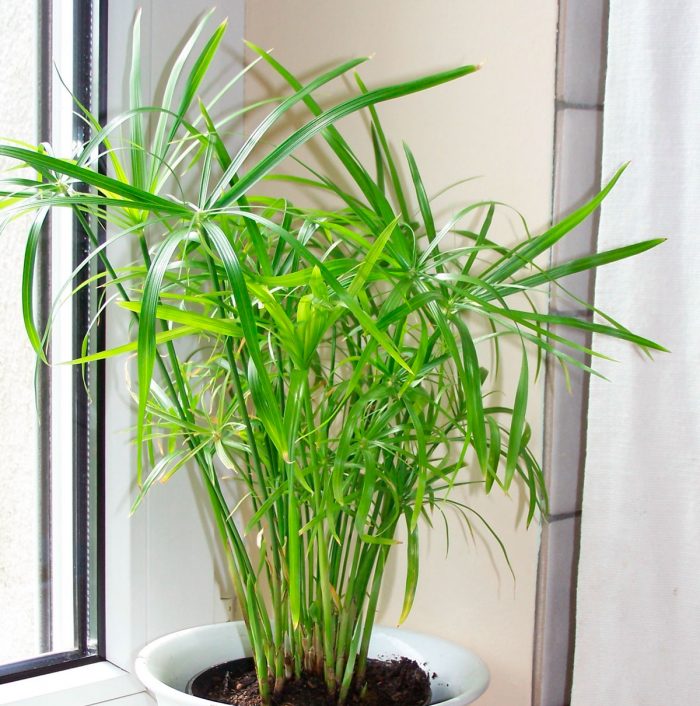
Illumination
Indoor cyperus grows best in bright light, but it can also be grown in a shaded area. It is recommended that the light be diffused, but the direct rays of the sun will also not harm the flower. However, from the midday scorching rays of the sun on sultry days, the bush should still be shaded. Cyperus can also be grown under fluorescent lamps, but the duration of daylight hours should be at least 15 hours.
Temperature regime
Best of all, such a culture in indoor conditions in summer and spring grows at temperatures from 20 to 22 degrees, it also needs fresh air. Make sure that in winter the air temperature in the room where the plant is located is not lower than 12 degrees.
Watering
Cyperus should be watered in such a way that its root system is always in a moist soil mixture. Experienced growers recommend installing the flower together with the pot in a pots, into which water is poured. Keep in mind, however, that the pot should only be slightly covered with water. In winter, the plant should be placed in a cool place, while watering it should be moderate, using soft, well-settled water for this.
Air humidity
The foliage of such a plant should be moistened regularly, often and with plenty of water. The liquid must be at room temperature. In the cold season, Cyperus should not be placed near heating appliances, and it should be moistened less often than usual.
Fertilizer
The flower needs fertilization only in the spring-summer period, while they are carried out every three weeks. For this, a complex mineral fertilizer is used. In order to accelerate the growth of the flower, the yellow old leaf plates are removed.
Pruning
When growing variegated forms, when green-leaved shoots appear, they must be cut off, otherwise after a while all the foliage will turn green. Throughout the year, brown spike-shaped flowers form in the leaf axils.
Cyperus transplant
The transplant is carried out only as needed, while this can be done at any time of the year. For transplantation, use a fertile soil mixture with a pH of 5–6, which consists of equal parts of humus and peat bog soil. To improve the structure of the substrate, you can add a sixth of marsh silt to it. For planting, a not very wide, but high pot is used, at the bottom of which a thick drainage layer is necessarily made, occupying at least ¼ of the container. If you plan to lower the pot with a bush in water, then after transplanting, the surface of the substrate is covered with a layer of sand. If desired, such a flower can be grown hydroponically.
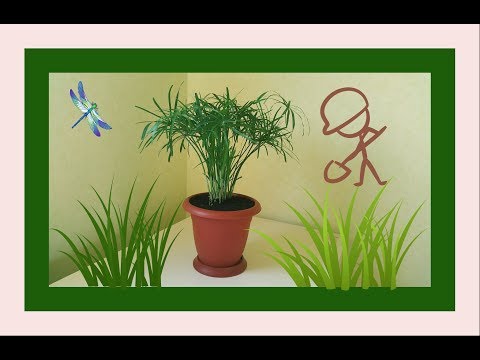

Watch this video on YouTube
Diseases and pests
Most often, whiteflies and thrips settle on such a plant, and spider mites and mealybugs can also harm it. If the room has very low air humidity, then the tips of the leaf plates of the flower will turn brown.
Reproduction methods
For reproduction of cyperus, leaf sockets are often used. It should be borne in mind that cyperus papyrus can only be propagated by dividing the bush or by seed. You can also propagate such a plant by cuttings.
Growing from seeds
For sowing seeds, bowls are used, which are filled with a substrate consisting of leafy and peat soil, as well as sand (2: 2: 1). When the seeds are sown, cover the bowl on top with a film (glass). For watering them, it is recommended to use lukewarm water, while making sure that the room is not colder than 18 degrees.The emerging seedlings need to be dived, for this, three of them are transplanted into a pot, reaching 70 mm in diameter, it must be filled with a soil mixture consisting of sand, leafy and sod soil (1: 2: 2). Watering should be abundant, while young plants should be protected from direct sunlight. After 8 weeks, the grown seedlings will need to be transplanted into larger containers, the diameter of which should be 20 mm larger than the old pots. At the same time, three plants are again planted in each container, and in this case the soil mixture is used that consists of peat and turf soil, and also sand (1: 2: 1).
Reproduction by rosettes
Cut off a leafy rosette with a portion of the stem and plant it in a pot filled with sand for rooting. They need such lower heating of the soil mixture so that its temperature is not less than 20 degrees, but also not higher than 24 degrees.
If possible, do not cut off the outlet, but bend it and immerse it in a container of water. After a while, roots should form on it, after which it is cut off and planted in an individual pot.
Cuttings
Cuttings are harvested in spring, for this, the upper part of the stem is cut off under the lower whorl node. Before planting for rooting, the leaf plates on the cuttings are shortened by 2/3. They are planted in pots, reaching about 70 mm in diameter.
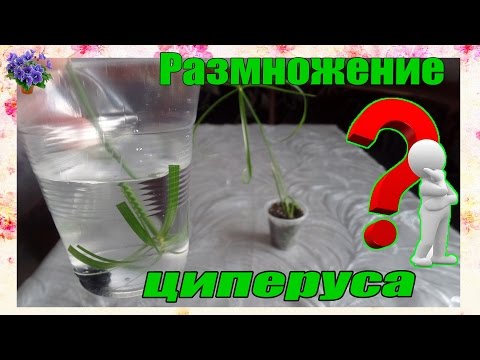

Watch this video on YouTube
Dividing the bush
When transplanting a bush that is more than two years old, it can be divided into several parts. Delenki will start growing very quickly and will soon become lush bushes.
The healing properties of cyperus
It is known that cyperus papyrus improves blood circulation in the brain, and it also has a positive effect on vision. It is also recommended for absent-minded people suffering from insomnia, who often have headaches. Cyperus papyrus is not recommended for those people who are insecure, indecisive or aggressive in their apartment.
Types of cyperus with a photo
Cyperus umbrella (Cyperus alternifolius)
In nature, this species is found in Madagascar, while it prefers to grow along swampy river banks. In height, the bushes can reach about one and a half meters, sometimes a little more. The straight stem is very often round; a leafy umbrella-shaped crown is formed at its apex. Linear leaf plates are long and narrow. Their width is about 1 centimeter, and their length is up to 24 centimeters. The inflorescences formed in the leaf axils are similar in shape to small panicles. There is a variety of variegata: there is a white strip on the surface of the green leaf plates.
Cyperus papyrus
In nature, the plant is most often found in the tropical zone of Africa. This perennial plant can reach a height of about 300 cm. In the upper part, the straight stem has a triangular shape. At the top of the stem is a leaf rosette, while the foliage is rather long, hanging down. Inflorescences grow from the axils of the leaf rosette; they consist of about 100 flowers, located on thin pedicels. Such a flower is grown in warmth with high humidity. Interestingly, paper is made from its stems.
Cyperus spreading (Cyperus diffusus)
In natural conditions, the species can be found in the tropical zone. There are few stems on the bush, in height they can reach about 0.9 m. Most of the numerous leaves grow mainly at the base of the stem, while they reach about 15 mm in width. In the upper part of the stem, 6–12 leaf plates grow, while their width is about 1 centimeter, and their length is up to 30 centimeters.
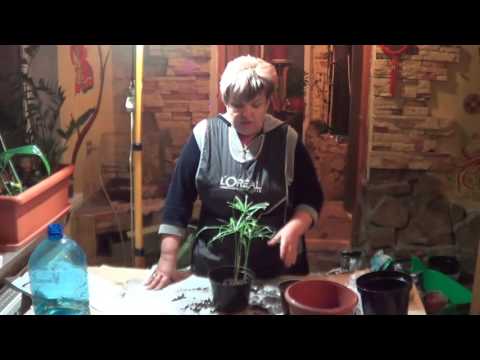

Watch this video on YouTube

